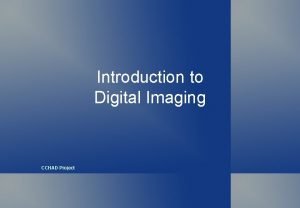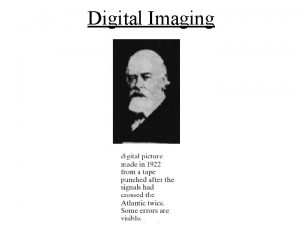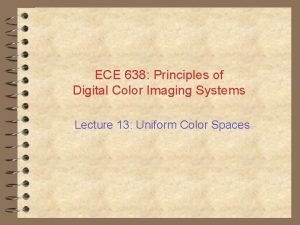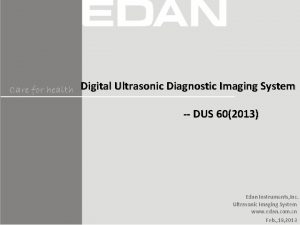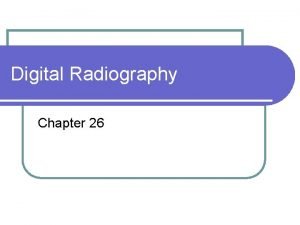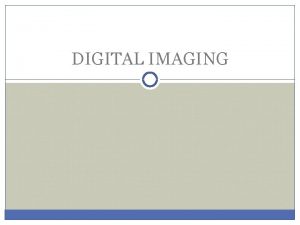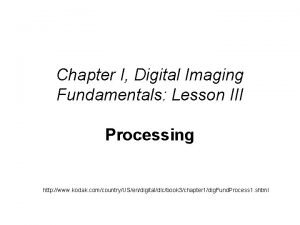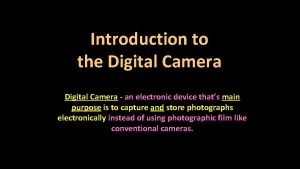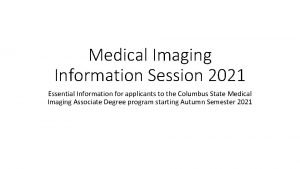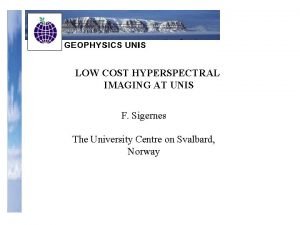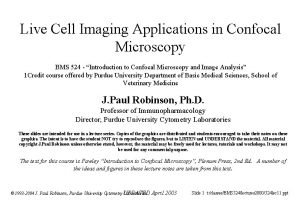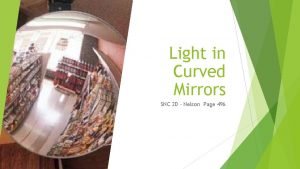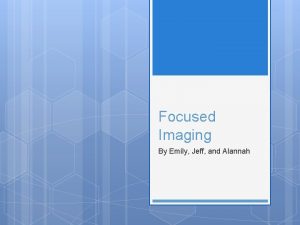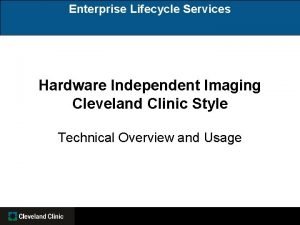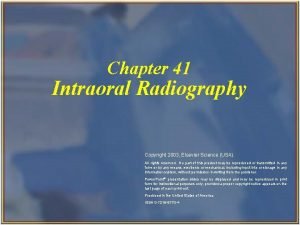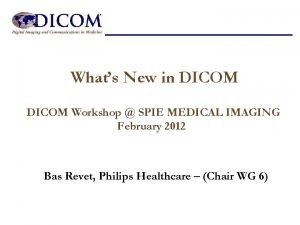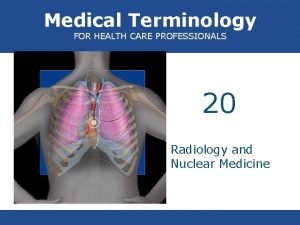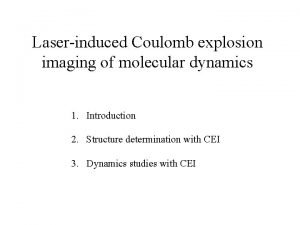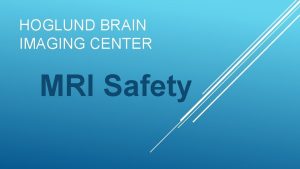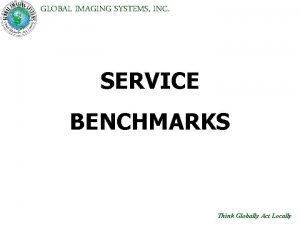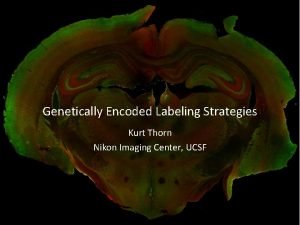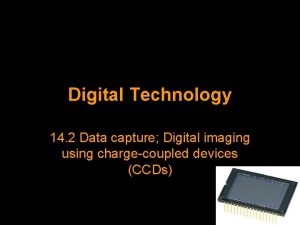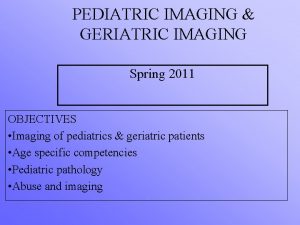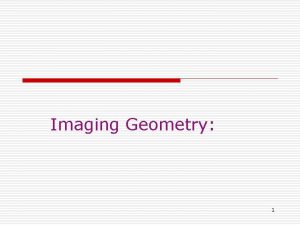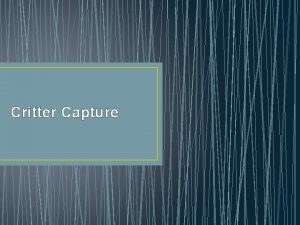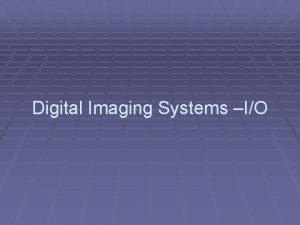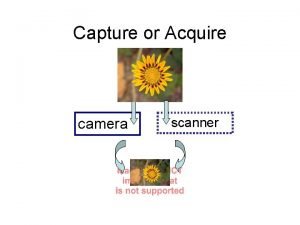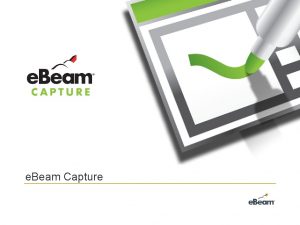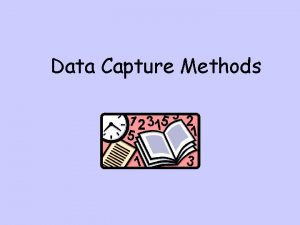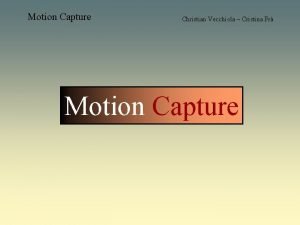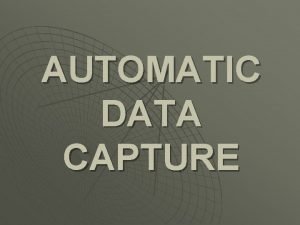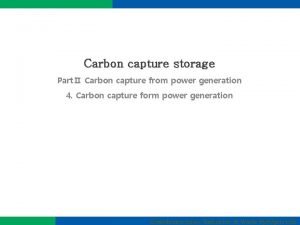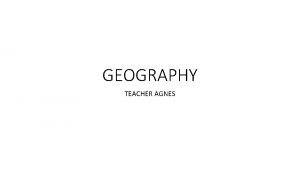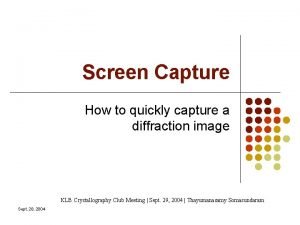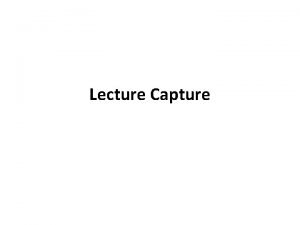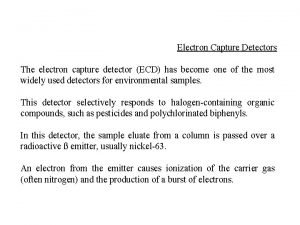Introduction to Digital Imaging CCHAD Project Digital Capture

































- Slides: 33

Introduction to Digital Imaging CCHAD Project

Digital Capture Analogue signal CCD or CMOS Analogue to Digital Conversion RGB Filters Digital Signal Lens Storage Original

Bitmap (raster) image concept Pixels arranged in a grid

Bitmap (raster) image - pixels Pixel colour information may be stored and expressed in many different ways PIXEL VALUES R: 0 G: 0 B: 0 RGB = 0, 0, 0 PIXEL VALUES R: 227 G: 192 B: 162 RGB = 227, 192, 162 One of the most common approaches is to use RGB values RGB = Red, Green, Blue

256 shades of grey (8 -bit) B & W images– bit depth 16 shades of grey (4 -bit) 4 shades of grey (2 -bit) 2 shades - black and white (1 -bit) Sometime used for text digitisation (saves storage space and computing power)

Colour images Indexed colour 16 colours Indexed colour 64 colours Indexed colour 256 colours RGB 24 -bit image 16. 7 million colours

Quality Digital Images Technically Suitable for archiving Minimum - 24 bit (RGB) colour OR Minimum – 8 -bit greyscale Visually • • Over 16. 7 million colours possible in the image (24 -bit RGB) 256 shades of grey (greyscale)

Resolution of an Image Higher resolution (larger number of pixels) Low resolution (small number of pixels)

Distance and resolution Camera is close to the object (more pixels assigned to the image) CCD Camera is far from the object (less pixels assigned to the image) CCD

Resolution Limits High resolution system Pixels clearly defined Low resolution system Pixels defined poorly

RGB - Red, Green, Blue Primary Colours in Digital Images Additive colour model Based on how a human eye perceives colour and deals with light being emitted by a light source. Primary colours (red, green, blue) are added together in varying intensities to produce broad array of colours. Employed in: • Computer monitors • Television screens • Digital scanners • Digital cameras

Computer Screens Magnified CRT screen (old technology) LCD screen 1 pixel Colour as perceived by the eye

CMYK Cyan, Magenta, Yellow, blac. K Subtractive colour model Used when mixing paints, dyes, inks and colorants. Each colour is produced by the mixture absorbing some wavelengths of light and reflecting others. Employed in: • Most printing processes Theoretically it should only be cyan, magenta and yellow colours employed in the model. Real life pigments or inks, however, are not pure enough to create good blacks. This is why the fourth colour – black (K) has been added to the process.

CMYK print Most popular printing processes use CMYK techniques

Capturing tones (shades of colour or grey) Human eye and conventional film: Gradual change from darker to lighter shade Black Digital image: 0 White Clearly defined steps between different shades (sampling) 255

What’s Inside Camera/Scanner? • Electronic Imagers – CCD – Charge-Coupled Device – CMOS – Complementary Metal-Oxide Semiconductor Virtually all current digital capture devices use these technologies. Both CCD and CMOS are solid state devices converting light photons into electric current. They are mono-chromatic and can capture black and white images only.

CCD & CMOS capture of colour RGB filters on top of CCD (Bayer pattern) CCD or CMOS R G B RGB filters in the camera split the incoming (through the lens) image into three primary channels – red, green and blue. In fact, the camera captures three separate images that are combined (by the camera or computer’s software) into full colour image.

Image Exposure Digital Camera Image correctly exposed (correct amount of light entering camera) Image over-exposed (too much light entering camera) Image exposure is regulated by either time that the CCD is “available” for recording the image – controlled by the SHUTTER SPEED OR amount of light allowed to enter the camera – controlled by the APERTURE ( a bit like a pupil in the eye) Image under-exposed (not enough light entering camera)

Brightness Perception Print Range Monitor Range Digital Camera Range Human Eye Range

Dynamic Range Low quality camera. Small dynamic range No detail in shadows

Dynamic Range Higher quality camera. Larger dynamic range Much better detail retained

Resolution and printing dpi = dots per inch (linear) On screen: 1, 200 pixels wide image Printed: 4 inches wide at 300 dpi: 2 inches wide at 600 dpi:

Resolution Calculating maximum size of the original material that your camera can capture 1. 2. 3. 4. 5. 6. Find your camera’s frame capture size (in pixels). Use the longer edge value (Let’s call this value: Cam_pix). Measure longer edge of the original material in inches (Let’s call this value: Mat_size). Divide Cam_pix by Mat_size and write down the result (Res). To achieve the archival quality capture Res should be equal to or larger than 300. If digitising to higher standards or small original material, Res is usually equal to or larger than 600. When capturing from film (negatives, slides), Res usually needs to be in excess of 2, 000. Examples: Camera frame size (in pixels) Approx. Megapixels Approx. maximum longer edge of the material (at 300 dpi - in inches) Approx. maximum longer edge of the material (at 600 dpi - in inches) 2048 x 1536 3 6. 5 3. 5 2592 x 1944 5 8. 5 4 3264 x 2448 8 10. 5 5 3872 x 2592 10 12. 5 6 4672 x 3104 14. 6 15. 5 8 Res = Cam_pix Mat_size IMPORTANT: The captured image has to fill the frame completely to achieve calculated resolution

Image Capture - Scanners A/D Conversion Computer

Scanners - quality • Maximum optical resolution v. interpolated resolution • Dynamic range • Quality of the lens and other elements Dynamic Range of scanners (Rough guide to scanner’s quality) Be aware that scanner manufacturers often exaggerate the dynamic range figures • Up to 3. 0: Poor • Up to 3. 5: Better • 3. 5 to 3. 7: Good • Above 3. 7: Very good • Above 4. 0: Excellent

Successful Digitisation • • Colour calibration of devices and computers Adequate lighting and setup of the camera Adequate capture resolution Proper handling of materials

Image manipulation should be kept to minimum in Archival Digitisation workflow • Cropping, rotating • Correcting colour (while using proper tools on colour calibrated systems) • Removing dust spots? (film scanning) • Converting to archival formats • Manipulation for delivery (web, print)

How to store images - media • CD-R or DVD (optical discs) – not recommended (will become obsolete soon; cumbersome and time-consuming to migrate data from) • “Archival” Digital Tape (usually available to large organisations only – expensive) • Internal & External Hard Disk Drives Currently, the safest, practical way to store large collections of images. Data needs to be re-freshed (re-written) every 5 years. • Cloud storage Good, additional option. Can be expensive and slow. Does not guarantee absolute safety.

How to store images - formats • RAW Generic name for all sorts of CCD-level (image processing kept to minimum) formats. Due to proprietary nature not suitable for archiving and should be converted to DNG. • DNG (Digital Negative) Adobe’s new, open standard for RAW format images, probably suitable for archiving. • TIFF (Tagged Image File Format) One of the most common and best formats to use in Digital Archiving • JPEG (Joint Photographic Experts Group) Best format for the internet, not suitable for archival images (uses lossy compression) • JPEG 2000 (Joint Photographic Experts Group) Can use lossless compression, great for delivering large images over the internet. Due to copyright issues with the JPEG 2000 standard and limited number of practical implementations its archival qualities are still unclear.

Lossy Compression Example (Not recommended for archival masters) Low compression Smaller number of images stored on the disk but better image quality Minimal loss Visible loss High compression Larger number of images stored on the disk but lower image quality

How to store images - Fixity • After image is in its final form, it’s a good idea to create a checksum for it. • How it is done: • Special software applies a mathematical algorithm to a digital file. • The result is a unique string of numbers and letters. It is absolutely unique for a given file and any changes to this file will result in a production of completely different checksum. • There are many types of checksums. Currently, digital preservation professionals recommend SHA 256 (safer) or SHA 1 (faster). • Checksums need to be stored with files, so they can be checked periodically. • SHA 256 example string (64 characters): • 3 d 753 ae 0 edc 96 e 4 b 377 b 94 bd 3 eb 3 f 7 c 001 c 21 fe 271 ada 643 be 3 fbf 55906 e 5792 SHA 1 example for the same file (40 characters): eff 2 b 1 adceb 7 a 1221 a 4 e 19756 e 0 d 1 f 70091 a 6423

How to store images - DAMS • DAM or DAMS – Digital Asset Management (System) software • Good DAMS features: • Enables safe and secure collection, management and delivery of digital assets • Enables multi-user workflows • Provides means of fast and accurate searching • Helps in digital preservation efforts • Some examples of DAMS: • Rosetta • Dspace • Resource. Space • Recollect • Piction • many, many more…

CCHAD Project, Coffs Harbour Council Andrew Stawowczyk Long email: andrew. long@chcc. nsw. gov. au Phone: +61 408 478 522
 Cchad
Cchad Frc driver station mac
Frc driver station mac Digital image definition
Digital image definition Digital imaging artist
Digital imaging artist Digital color imaging
Digital color imaging Digital ultrasonic diagnostic imaging system
Digital ultrasonic diagnostic imaging system Chapter 39 digital imaging film and radiographs
Chapter 39 digital imaging film and radiographs Digital imaging terminology
Digital imaging terminology Chapter 39 digital imaging film and radiographs
Chapter 39 digital imaging film and radiographs Digital imaging fundamentals
Digital imaging fundamentals Is camera electronic device
Is camera electronic device Digital time capture
Digital time capture Windows image acquisition service
Windows image acquisition service Quantum imaging with undetected photons
Quantum imaging with undetected photons Ohiohealth berger hospital mammography circleville
Ohiohealth berger hospital mammography circleville Affordable hyperspectral imaging
Affordable hyperspectral imaging Live cell imaging ppt
Live cell imaging ppt Curved mirrors
Curved mirrors Focused imaging learning
Focused imaging learning Direct imaging subsystem
Direct imaging subsystem Hardware independent imaging
Hardware independent imaging Implementation support
Implementation support Basic principles of the bitewing technique include the:
Basic principles of the bitewing technique include the: Is2000 the advanced imaging solution
Is2000 the advanced imaging solution Spie medical imaging
Spie medical imaging Imaging near redwood city
Imaging near redwood city Picture perfect imaging
Picture perfect imaging Nuclear imaging techniques
Nuclear imaging techniques Radiology medical terminology
Radiology medical terminology Coulomb explosion
Coulomb explosion Iac princeton
Iac princeton Lyric hearing aid mri safety
Lyric hearing aid mri safety Global imaging systems inc
Global imaging systems inc Ucsf nikon imaging center
Ucsf nikon imaging center
